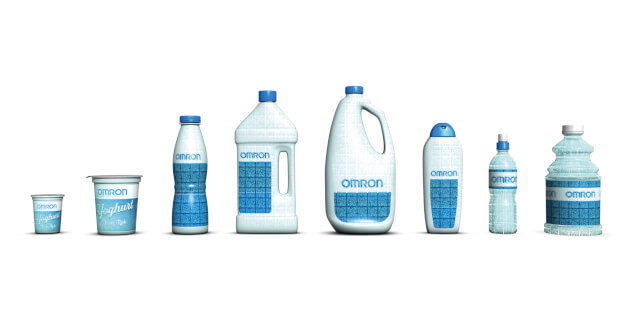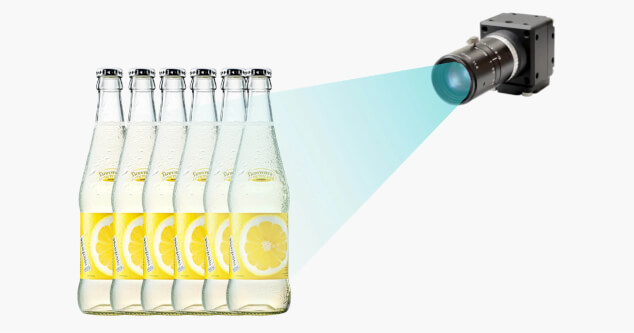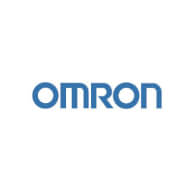Imperceptible innovation: Digital watermarks + industrial automation
Publicerat 20 mars 2025 i Imperceptible innovation

What are digital watermarks?
Digital watermarking technology embed imperceptible, machine-readable information directly into items such as packaging or product labels. Unlike visible codes, these watermarks preserve design aesthetics while providing a seamless method for automation systems to detect and analyze data. Their ubiquity and high redundancy ensure reliable detection even on complex packaging like cylindrical bottles or transparent films.
Unlike traditional codes, which require precise alignment for readability, digital watermarks are detected across the entire surface of a package. This makes them ideal for high-speed, high-volume production environments, where even minor errors in labeling or packaging can lead to costly recalls and inefficiencies.
Why digital watermarks are ideal in manufacturing
Modern manufacturing faces challenges that go far beyond just keeping up with production speed. Errors in labelling or product mixing can disrupt operations and lead to significant consequences, such as allergen mislabelling or incorrect bundling , in addition to product waste. Traditional codes often fall short in these scenarios due to their visibility constraints and orientation requirements in packaging or containers with irregular, deformable or cylindrical shapes.

Digital watermarks address these issues by enabling a automated quality control and helping manufacturers take steps towards their sustainability goals.
- Automated quality control checks
Digital watermarks improve automated quality inspections and minimize human error by making sure the product and packaging are right . This guarantees that any mismatches in product components or mislabelled packaging will never reach the market—errors that can lead to expensive recalls, regulatory issues and safety risks for the consumer. Used together with advanced inspection systems like OMRON's vision technology ensure not only accurate detection of even the smallest defects but also unequivocal decoding of digital watermarks. - Sustainable packaging solutions
When optimizing resource use and eliminating unnecessary packaging materials or components, digital watermarks are key to support more sustainable packaging designs. For instance, removing plastic shrink sleeves can reduce waste, lower carbon footprints, and cut production costs, but will reduce the area where the labelling information is printed. By embedding digital watermarks directly on the container, the more sustainable package design won’t be affected all while maintaining traceability and branding. - Precise order fulfilment and distribution
Digital watermarks streamline the identification and tracking of products on production lines. Unlike traditional codes, which can be difficult to scan at high speeds, advanced inspection systems enabled to read digital watermarks ensure flawless readability without reducing the process speed, also enhancing efficiency in sorting, shipping, and order fulfilment processes. - Post-consumer material identification
Beyond production, digital watermarks together advanced vision systems enable a more accurate automatic identification of packaging materials for recycling facilities. The fact that the digital watermark is printed in repeated patterns on the entire surface of the material or container, allows the vision system to detect and decode all data from any part of it, even if is broken, deformed or dirty. This supports circular economy initiatives by improving sortation and generating sustainability metrics, helping brand owners meet environmental goals. - Data collection and analysis
Real-time data gathering from digital watermarks can be used to improve the decision-making process as well as increasing the data transparency. From quality assurance analysis and reporting to inventory management and forecasting, the combination of digital watermarks and advanced automation systems, reduces downtime, avoids overproduction, and ensures the traceability of products along the supply chain.
Practical application: Peeling back plastic
OMRON’s role in the solution
- Detection of digital watermarks on foil lids.
- Inspection for date code presence, lid concentricity, and proper alignment.
- High-speed operation, with each processing task completed in approximately 30 milliseconds.
Key benefits of digital watermarks in industrial automation applications
- Reduce production waste and mixing: Automate quality control to eliminate mismatches and labeling errors.
- Increase speed and efficiency: Handle high-speed processing with fewer manual interventions.
- Improve recyclability: and reduce environmental impact with smarter packaging.
- Boost traceability and compliance: Meet stringent regulatory standards with reliable data collection and inspection.
- Optimize operations: Leverage real-time data insights for better inventory management.

